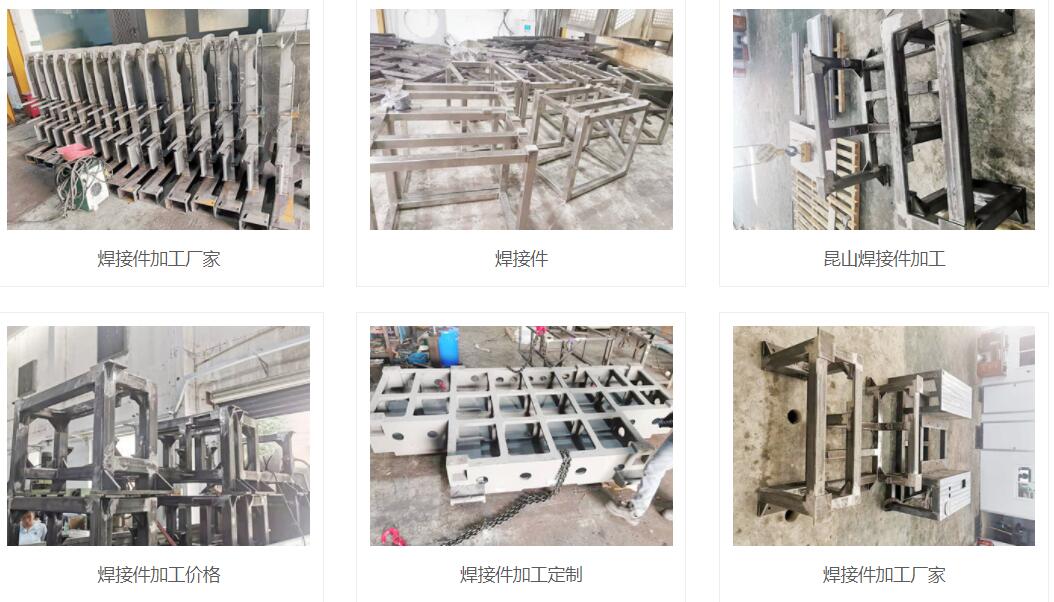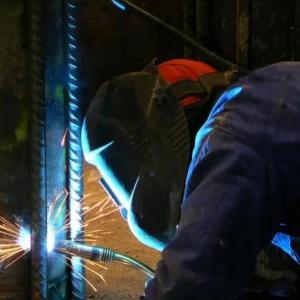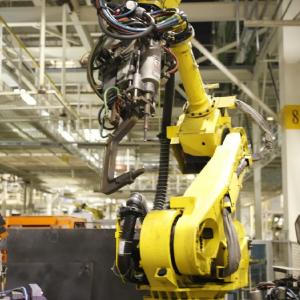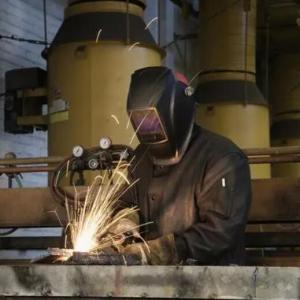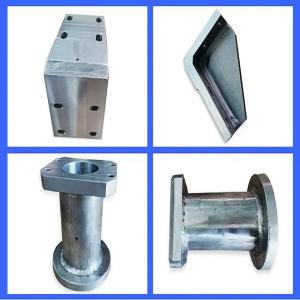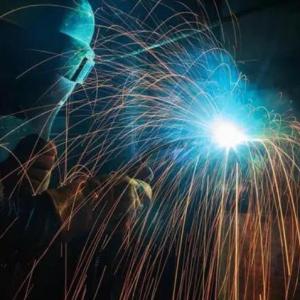Design requirements for welding parts processing
Design requirements for welding parts processing
1 Optimization of temperature measurement method of workpiece in vacuum chamber
1.1 Optimal temperature measurement method
Between 200 and 100 BC, the ancient Greeks Philon and Shiron each made a thermometer based on the principle of air expansion. Since then, the development of temperature measurement technology has been varied and varied. The classification and characteristics of commonly used temperature measurement methods are shown in Table (2). From the comparison of the above table, it can be seen that due to the need to measure temperature in a vacuum state, the expansion method, pressure method, resistance method and thermal radiation method have their limitations. The use of K-type thermocouples for temperature measurement has the advantages of good linearity, fast response, high precision, wide temperature measurement range, suitable recording and control, and moderate price, especially on-site implementation is simple and operability is strong. Therefore, We use K-type electric couple to measure the temperature of the workpiece during the electron beam welding process.
(2) Classification and characteristics of commonly used temperature measurement methods
1.2 Implementation of temperature measurement method
Since the temperature of the workpiece in the vacuum chamber needs to be measured, the connection between the thermocouple and the workpiece needs to be solved first. In actual processing, we use capacitor energy storage welding to weld the thermocouple to the designated temperature measurement position, and use capacitor energy storage welding to fix the compensation wire of the thermocouple with a narrow strip of metal foil.
The compensation wire is connected to the terminal reserved for the vacuum electron beam welding machine. The corresponding terminals outside the vacuum chamber are connected to the DR020R digital temperature circuit detector through compensation wires, and the recorder can be used to automatically measure, display, monitor and record the temperature of the workpiece during the welding process. It can also read and print the temperature value of the workpiece during the welding process measured by the thermocouple.
Which one is better for welding parts?
In the actual welding process, it should be noted that the compensation wire connected to the thermocouple inside the vacuum chamber should be wound around the workpiece twice, and leave an appropriate margin before connecting it to the terminal reserved for the vacuum electron beam welding machine to prevent the workpiece from being damaged during the welding process. Rotation, the thermocouple will be broken, which will affect the normal progress of temperature measurement and welding.
2. Control of workpiece temperature during vacuum electron beam welding
In practice, the temperature rise control of the workpiece is realized by adopting heat dissipation tooling and optimizing welding parameters. A pair of semi-cylindrical copper heat sinks with a thickness of about 30mm are used, which are closely attached to the outer surface of the hydraulic actuator to assist heat dissipation.
First of all, through the process test of the simulated parts, the preferred welding parameters are as follows:
Accelerating voltage: 150KV
Welding current: 7.5mA
Focusing current: 2088mA
Welding speed: 20mm/s
After welding, the simulated parts are inspected by visual, X-ray, and fluorescence, and there are no defects such as incomplete penetration, cracks, and pores. At the same time, the metallographic anatomical inspection was carried out, and the reverse side was well formed and there was no splash.
The actual measurement results are: the temperature rise in the vicinity of the seam at 20mm from the center of the weld is 62°C, and the temperature rise control of the workpiece effectively meets the design requirements.
On the basis of the test, we carried out the welding of the actual components. A total of nearly 100 components have been welded without any waste, and the ovality of the cylinder after welding is less than 0.005mm, and the geometric dimensions meet the requirements of the design drawings.
3 Conclusions
The temperature measurement method is economical and practical when assembling the hydraulic actuator by electron beam welding, and the temperature control process of the workpiece is simple and effective. The ovality of the processed parts does not increase by more than 0.005mm after actual measurement, and the temperature during the welding process is about 62°C at a distance of 20mm from the welding seam. The temperature rise control of the workpiece effectively meets the design requirements and has been put into mass production. This method is also suitable for the welding of other parts that have special requirements for the temperature of the assembly during the welding process
Advantages and disadvantages of welding processing
Common types of precision welding include precision resistance welding, laser welding, ultrasonic welding, and micro-arc spot welding. Due to the characteristics of the laser itself, compared with other welding processes, precision laser welding has the advantages of high efficiency, environmental protection, and high processing accuracy.
With the development of welding processing, its prospects are very broad. Let's talk about its advantages first:
1) Welding of various trajectories can be realized. The laser has a strong directionality, which also has a good effect on the welding of irregular materials;
2) The welding is firm. After the laser is focused, the spot is small and the energy density is high, which ensures that the beam forms a heat source area in a very short time, and forms a solid welding seam and welding spot after melting, cooling and crystallization;
However, everything has pros and cons. Having said the advantages, let's talk about its disadvantages:
Which one is better for welding?
a) Welding penetration is small;
b) Poor performance of welded joints;
c) The cost of consumables required by the equipment is relatively high;
With the continuous development of laser technology, in view of the shortcomings of precision laser welding, people adopt new solutions to improve the heating of the workpiece by the laser, and use the method of laser hybrid welding (such as laser and plasma arc welding, double laser beam welding), Improves the performance of laser welded joints and reduces equipment costs.
